479 have author last names that start with R have author last names that start with R

In 1902, a nineteen-year-old aspiring poet named Franz Kappus wrote to Rainer Maria Rilke, then twenty-six, seeking advice on his poetry. Kappus, a student at a military academy in Vienna similar to the one Rilke had attended, was about to embark on a career as an officer, for which he had little inclination. Touched by the innocence and forthrightness of the student, Rilke responded to Kappus’ letter and began an intermittent correspondence that would last until 1908.
Letters to a Young Poet collects the ten letters that Rilke wrote to Kappus. A book often encountered in adolescence, it speaks directly to the young. Rilke offers unguarded thoughts on such diverse subjects as creativity, solitude, self-reliance, living with uncertainty, the shallowness of irony, the uselessness of criticism, career choices, sex, love, God, and art. Letters to a Young Poet is, finally, a life manual. Art, Rilke tells the young poet in his final letter to him, is only another way of living.
With the same artistry that marks his widely acclaimed translations of Kafka’s The Castle and Amerika: The Missing Person, Mark Harman captures the lyrical and spiritual dimensions of Rilke’s prose. In his introduction, he provides biographical contexts for the reader and discusses the challenges of translating Rilke. This lovely hardcover edition makes a perfect gift for any young person starting out in life or for those interested in finding a clear articulation of Rilke’s thoughts on life and art.
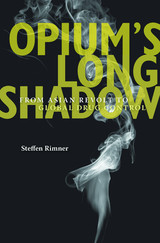
The League of Nations Advisory Committee on the Traffic in Opium and Other Dangerous Drugs, created in 1920, culminated almost eight decades of political turmoil over opium trafficking, which was by far the largest state-backed drug trade in the age of empire. Opponents of opium had long struggled to rein in the profitable drug. Opium’s Long Shadow shows how diverse local protests crossed imperial, national, and colonial boundaries to gain traction globally and harness public opinion as a moral deterrent in international politics after World War I.
Steffen Rimner traces the far-flung itineraries and trenchant arguments of reformers—significantly, feminists and journalists—who viewed opium addiction as a root cause of poverty, famine, “white slavery,” and moral degradation. These activists targeted the international reputation of drug-trading governments, first and foremost Great Britain, British India, and Japan, becoming pioneers of the global political tactic we today call naming and shaming. But rather than taking sole responsibility for their own behavior, states in turn appropriated anti-drug criticism to shame fellow sovereigns around the globe. Consequently, participation in drug control became a prerequisite for membership in the twentieth-century international community. Rimner relates how an aggressive embrace of anti-drug politics earned China and other Asian states new influence on the world stage.
The link between drug control and international legitimacy has endured. Amid fierce contemporary debate over the wisdom of narcotics policies, the 100-year-old moral consensus Rimner describes remains a backbone of the international order.
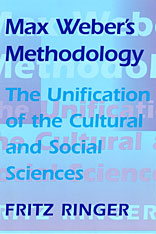
At a time when historical and cultural analyses are being subjected to all manner of ideological and disciplinary prodding and poking, the work of Max Weber, the brilliant social theorist and one of the most creative intellectual forces in the twentieth century, is especially relevant. In this significant study, Fritz Ringer offers a new approach to the work of Weber, interpreting his methodological writings in the context of the lively German intellectual debates of his day. According to Ringer, Weber was able to bridge the intellectual divide between humanistic interpretation and causal explanation in historical and cultural studies in a way that speaks directly to our own time, when methodological differences continue to impede fruitful cooperation between humanists and social scientists. In the place of the humanists' subjectivism and the social scientists' naturalism, Weber developed the flexible and realistic concepts of objective probability and adequate causation.
Grounding technical theories in specific examples, Ringer has written an essential text for all students of Weber and of social theory in the humanities and social sciences. Fully reconstructed, Max Weber's methodological position in fact anticipated the most fruitful directions in our own contemporary philosophies of the cultural and social sciences. Ringer's conceptualization of Weber's approach and achievement elucidates Weber's reconciliation of interpretive understanding and causal explanation and shows its relevance to intellectual life and culture in Weber's own time and in ours as well.
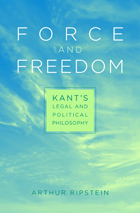
In this masterful work, both an illumination of Kant’s thought and an important contribution to contemporary legal and political theory, Arthur Ripstein gives a comprehensive yet accessible account of Kant’s political philosophy. Ripstein shows that Kant’s thought is organized around two central claims: first, that legal institutions are not simply responses to human limitations or circumstances; indeed the requirements of justice can be articulated without recourse to views about human inclinations and vulnerabilities. Second, Kant argues for a distinctive moral principle, which restricts the legitimate use of force to the creation of a system of equal freedom. Ripstein’s description of the unity and philosophical plausibility of this dimension of Kant’s thought will be a revelation to political and legal scholars.
In addition to providing a clear and coherent statement of the most misunderstood of Kant’s ideas, Ripstein also shows that Kant’s views remain conceptually powerful and morally appealing today. Ripstein defends the idea of equal freedom by examining several substantive areas of law—private rights, constitutional law, police powers, and punishment—and by demonstrating the compelling advantages of the Kantian framework over competing approaches.

A waiter spills hot coffee on a customer. A person walks on another person’s land. A moored boat damages a dock during a storm. A frustrated neighbor bangs on the wall. A reputation is ruined by a mistaken news report. Although the details vary, the law recognizes all of these as torts, different ways in which one person wrongs another. Tort law can seem puzzling: sometimes people are made to pay damages when they are barely or not at fault, while at other times serious losses go uncompensated. In this pioneering book, Arthur Ripstein brings coherence and unity to the baffling diversity of tort law in an original theory that is philosophically grounded and analytically powerful.
Ripstein shows that all torts violate the basic moral idea that each individual is in charge of his or her own person and property, and never in charge of another individual’s person or property. Battery and trespass involve one person wrongly using another’s body or things, while negligence injures others by imposing risks to them in ways that are inconsistent with their independence. Tort remedies aim to provide a substitute for the right that was violated.
As Private Wrongs makes clear, tort law not only protects our bodies and property but constitutes our entitlement to use them as we see fit, consistent with the entitlement of others to do the same.

In 1990, months before crowds in Moscow and other major cities dismantled their monuments to Lenin, residents of the western Ukrainian city of Lviv toppled theirs. William Jay Risch argues that Soviet politics of empire inadvertently shaped this anti-Soviet city, and that opposition from the periphery as much as from the imperial center was instrumental in unraveling the Soviet Union.
Lviv’s borderlands identity was defined by complicated relationships with its Polish neighbor, its imperial Soviet occupier, and the real and imagined West. The city’s intellectuals—working through compromise rather than overt opposition—strained the limits of censorship in order to achieve greater public use of Ukrainian language and literary expression, and challenged state-sanctioned histories with their collective memory of the recent past. Lviv’s post–Stalin-generation youth, to which Risch pays particular attention, forged alternative social spaces where their enthusiasm for high culture, politics, soccer, music, and film could be shared.
The Ukrainian West enriches our understanding not only of the Soviet Union’s postwar evolution but also of the role urban spaces, cosmopolitan identities, and border regions play in the development of nations and empires. And it calls into question many of our assumptions about the regional divisions that have characterized politics in Ukraine. Risch shines a bright light on the political, social, and cultural history that turned this once-peripheral city into a Soviet window on the West.



Like many of his generation, James M. Landis was motivated by a passion for public service. From the New Deal to the New Frontier, he devoted his life to shaping the many federal regulatory commissions and to making capitalism “live up to its pretensions.” Attacked by conservatives and liberals alike, he became the most important and most controversial figure in the history of the regulatory process. Donald A. Ritchie offers a superbly documented study of the man that analyzes the contributions of Landis's public career and the personal weaknesses that eventually undermined it, leading to his disbarment and disgrace.
Landis's story is really that of two men. One was a founder and New Deal Chairman of the Securities and Exchange Commission, a major writer and enforcer of regulatory legislation, youngest Dean of the Harvard Law School, and economic troubleshooter for Presidents Roosevelt, Truman, and Kennedy. The other was a private man unsure of his success and incapable of handling his own problems. His repeated failure to file his federal income tax returns, astonishing for a lawyer, was the most obvious—and most destructive—symptom of Landis's tumultuous inner confusion.
Ritchie's exhaustive research into Landis' papers—at Harvard University, the Library of Congress, and the Roosevelt, Truman, and Kennedy libraries—and interviews with Landis's family, associates, and psychiatrist help to unravel the mystery of this problematical man. The result is an outstanding biography of a major force behind business and government policy in the twentieth century.
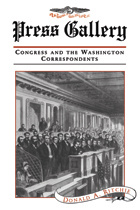

The legends that die hardest are those of the romantic outlaw, and those of swashbuckling pirates are surely among the most durable. Swift ships, snug inns, treasures buried by torchlight, palm-fringed beaches, fabulous riches, and, most of all, freedom from the mean life of the laboring man are the stuff of this tradition reinforced by many a novel and film.
It is disconcerting to think of such dashing scoundrels as slaves to economic forces, but so they were—as Robert Ritchie demonstrates in this lively history of piracy. He focuses on the shadowy figure of William Kidd, whose career in the late seventeenth century swept him from the Caribbean to New York, to London, to the Indian Ocean before he ended in Newgate prison and on the gallows. Piracy in those days was encouraged by governments that could not afford to maintain a navy in peacetime. Kidd’s most famous voyage was sponsored by some of the most powerful men in England, and even though such patronage granted him extraordinary privileges, it tied him to the political fortunes of the mighty Whig leaders. When their influence waned, the opposition seized upon Kidd as a weapon. Previously sympathetic merchants and shipowners did an about-face too and joined the navy in hunting down Kidd and other pirates.
By the early eighteenth century, pirates were on their way to becoming anachronisms. Ritchie’s wide-ranging research has probed this shift in the context of actual voyages, sea fights, and adventures ashore. What sort of men became pirates in the first place, and why did they choose such an occupation? What was life like aboard a pirate ship? How many pirates actually became wealthy? How were they governed? What large forces really caused their downfall?
As the saga of the buccaneers unfolds, we see the impact of early modern life: social changes and Anglo-American politics, the English judicial system, colonial empires, rising capitalism, and the maturing bureaucratic state are all interwoven in the story. Best of all, Captain Kidd and the War against the Pirates is an epic of adventure on the high seas and a tale of back-room politics on land that captures the mind and the imagination.
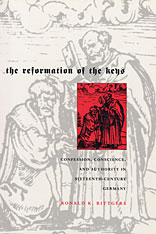
The Catholic Church’s claims to spiritual and temporal authority rest on Jesus’ promise in the gospels to give Peter the keys to the kingdom of heaven. In the sixteenth century, leaders of the German Reformation sought a fundamental transformation of this “power of the keys” as part of their efforts to rid Church and society of alleged clerical abuses. Central to this transformation was a thoroughgoing reform of private confession.
Unlike other Protestants, Lutherans chose not to abolish private confession but to change it to suit their theological convictions and social needs. In a fascinating examination of this new religious practice, Ronald Rittgers traces the development of Lutheran private confession, demonstrating how it consistently balanced competing concerns for spiritual freedom and moral discipline. The reformation of private confession was part of a much larger reformation of the power of the keys that had profound implications for the use of religious authority in sixteenth-century Germany.
As the first full-length study of the role of Lutheran private confession in the German Reformation, this book is a welcome contribution to early modern European and religious history.
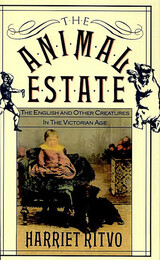
When we think about the Victorian age, we usually envision people together with animals: the Queen and her pugs, the sportsman with horses and hounds, the big game hunter with his wild kill, the gentleman farmer with a prize bull. Harriet Ritvo here gives us a vivid picture of how animals figured in English thinking during the nineteenth century and, by extension, how they served as metaphors for human psychological needs and sociopolitical aspirations.
Victorian England was a period of burgeoning scientific cattle breeding and newly fashionable dog shows; an age of Empire and big game hunting; an era of reform and reformers that saw the birth of the Royal SPCA. Ritvo examines Victorian thinking about animals in the context of other lines of thought: evolution, class structure, popular science and natural history, imperial domination. The papers and publications of people and organizations concerned with agricultural breeding, veterinary medicine, the world of pets, vivisection and other humane causes, zoos, hunting at home and abroad, all reveal underlying assumptions and deeply held convictions—for example, about Britain’s imperial enterprise, social discipline, and the hierarchy of orders, in nature and in human society.
Thus this book contributes a new new topic of inquiry to Victorian studies; its combination of rhetorical analysis with more conventional methods of historical research offers a novel perspective on Victorian culture. And because nineteenth-century attitudes and practices were often the ancestors of contemporary ones, this perspective can also inform modern debates about human–animal interactions.


"Cats is 'dogs,' and rabbits is 'dogs,' and so's parrots; but this `ere 'tortis' is a insect," a porter explains to an astonished traveler in a nineteenth-century Punch cartoon. Railways were not the only British institution to schematize the world. This enormously entertaining book captures the fervor of the Victorian age for classifying and categorizing every new specimen, plant or animal, that British explorers and soldiers and sailors brought home. As she depicts a whole complex of competing groups deploying rival schemes and nomenclatures, Harriet Ritvo shows us a society drawing and redrawing its own boundaries and ultimately identifying itself.
The experts (whether calling themselves naturalists, zoologists, or comparative anatomists) agreed on their superior authority if nothing else, but the laymen had their say--and Ritvo shows us a world in which butchers and artists, farmers and showmen vied to impose order on the wild profusion of nature. Sometimes assumptions or preoccupations overlapped; sometimes open disagreement or hostility emerged, exposing fissures in the social fabric or contested cultural territory. Of the greatest interest were creatures that confounded or crossed established categories; in the discussions provoked by these mishaps, monstrosities, and hybrids we can see ideas about human society--about the sexual proclivities of women, for instance, or the imagined hierarchy of nations and races.
A thoroughly absorbing account of taxonomy--as zoological classification and as anthropological study--The Platypus and the Mermaid offers a new perspective on the constantly shifting, ever suggestive interactions of scientific lore, cultural ideas, and the popular imagination.

A new history shows how FDR developed a vision of national security focused not just on protecting Americans against physical attack but also on ensuring their economic well-being—and how the nascent conservative movement won the battle to narrow its meaning, durably reshaping US politics.
Americans take for granted that national security comprises physical defense against attacks. But the concept of national security once meant something more. Franklin Roosevelt’s vision for national security, Peter Roady argues, promised an alternate path for the United States by devoting as much attention to economic want as to foreign threats. The Contest over National Security shows how a burgeoning conservative movement and power-hungry foreign policy establishment together defeated FDR’s plans for a comprehensive national security state and inaugurated the narrower approach to national security that has dominated ever since.
In the 1930s, Roosevelt and his advisors, hoping to save the United States from fascism and communism, argued that national security entailed protection from both physical attack and economic want. Roosevelt’s opponents responded by promoting a more limited national security state privileging military defense over domestic economic policy. Conservatives brought numerous concerns to bear through an enormous public relations offensive, asserting not just that Roosevelt’s plans threatened individual freedom but also that the government was less competent than the private sector and incapable of delivering economic security.
This contest to define the government’s national security responsibilities in law and in the public mind, Roady reveals, explains why the United States developed separate and imbalanced national security and welfare states, with far-reaching consequences. By recovering FDR’s forgotten vision, Roady restores a more expansive understanding of national security’s meanings as Americans today face the great challenges of their times.


The mid-nineteenth century was a period of extraordinary intellectual excitement and tension and nowhere is this more vividly illustrated than in the divergent careers of Cardinal Newman and his brother Francis. Both were men of considerable mental powers and high moral purpose. They shared a devotion to the search for religious truth and spiritual values, yet their intellectual development drove them further and further apart until they came to represent the two opposing philosophical positions of their age.
Professor Robbins' study of the brothers reveals in a new and striking way the master currents of the period which carried these symbolical figures in such different directions. With considerable psychological insight he traces their early lives from the common evangelical zeal of their adolescence through their striking careers at Oxford. He then follows the famous story of John Henry Newman's difficult and hesitating journey of conscience which led him to break with the Church of England and embrace the rigid dogma of Rome. He contrasts it with the almost unknown progress of Francis Newman from the life of an evangelical and missionary to become an apostle of all those liberal, rationalist ideas which his brother had rejected with such vehemence and to doubt the very bases of the christian faith.
Cardinal Newman's life has already been explored in many books but Professor Robbins draws on illuminating new material. He quotes from many unpublished letters between the brothers and from the works of Francis which few but he have read for two generations.
The weight of scholarship behind this book makes it an important study for students of nineteenth-century literature, philosophy and religion, while the general reader should find this a lucid and compelling account of the interplay of sharply contrasting ideas and personalities.

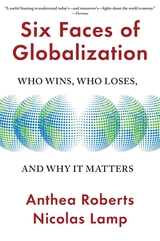
A Financial Times Best Book of the Year
A Fortune Best Book of the Year
A ProMarket Best Political Economy Book of the Year
An essential guide to the intractable public debates about the virtues and vices of economic globalization, cutting through the complexity to reveal the fault lines that divide us and the points of agreement that might bring us together.
Globalization has lifted millions out of poverty. Globalization is a weapon the rich use to exploit the poor. Globalization builds bridges across national boundaries. Globalization fuels the populism and great-power competition that is tearing the world apart.
When it comes to the politics of free trade and open borders, the camps are dug in, producing a kaleidoscope of claims and counterclaims, unlikely alliances, and unexpected foes. But what exactly are we fighting about? And how might we approach these issues more productively? Anthea Roberts and Nicolas Lamp cut through the confusion with an indispensable survey of the interests, logics, and ideologies driving these intractable debates, which lie at the heart of so much political dispute and decision making. The authors expertly guide us through six competing narratives about the virtues and vices of globalization: the old establishment view that globalization benefits everyone (win-win), the pessimistic belief that it threatens us all with pandemics and climate change (lose-lose), along with various rival accounts that focus on specific winners and losers, from China to America’s Rust Belt.
Instead of picking sides, Six Faces of Globalization gives all these positions their due, showing how each deploys sophisticated arguments and compelling evidence. Both globalization’s boosters and detractors will come away with their eyes opened. By isolating the fundamental value conflicts—growth versus sustainability, efficiency versus social stability—driving disagreement and showing where rival narratives converge, Roberts and Lamp provide a holistic framework for understanding current debates. In doing so, they showcase a more integrative way of thinking about complex problems.
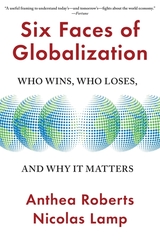
A Financial Times Book of the Year
A Fortune Book of the Year
“This book compels us to change our position, move out of our comfort zone, and see the world differently.”—Branko Milanovic, author of Capitalism, Alone
“A very smart book…not just about globalization, but also about the power and importance of narrative…Highly recommended.”—Anne-Marie Slaughter, CEO, New America
“An indispensable guide to how and why many people have abandoned the old, time-tested ways of thinking about politics and the economy. This is the book the world needs to read now.”—Richard Baldwin, author of The Great Convergence
When it comes to the politics of free trade and open borders, the camps are clear, producing a kaleidoscope of claims and counterclaims. But what exactly are we fighting about? Anthea Roberts and Nicolas Lamp cut through the confusion and mudslinging with an indispensable survey of the interests, logics, and ideologies driving these seemingly intractable arguments.
Instead of picking sides, Six Faces of Globalization guides us through six competing narratives about the virtues and vices of globalization, giving each position its due and showing how each deploys sophisticated arguments and compelling evidence. Both globalization’s boosters and detractors will come away with their eyes opened. By isolating the fundamental value conflicts driving disagreement—growth versus sustainability, efficiency versus social stability—and showing where rival narratives converge, this book provides an invaluable framework for understanding ongoing debates and finding a way forward.


The centuries-long complexity of China's political experience, the richness of its culture, and the drama of its economic unfolding are the hallmarks of this short but sweeping history. China's own history is entwined with its response to the West in a rich tapestry depicting its peoples, rulers, and society. More than a nuanced history of a vast continent, this study is sensitive to the multifaceted and changing interpretations of China that have been offered over the years.
In this overarching book, J. A. G. Roberts refers to recent archeological finds--the caches of bronze vessels found at Sanxingdui--and to new documentary reevaluations--the reassessment of Manchu documentation. The first half of the book provides an up-to-date interpretation of China's early and imperial history, while the second half concentrates on the modern period and provides an interpretive account of major developments--the impact of Western imperialism, the rise of Chinese Communism, and the record of the People's Republic of China since 1949.
Concise and direct, this book is a compelling narrative and handy companion for those interested in China.

Supply-side economics, emphasizing tax cuts over government spending, has been much maligned and little understood. It first leaped to national attention during the budget policy debates of 1977–78, when the new ideas captured the imagination of Congress and challenged conventional Keynesian models. After Ronald Reagan was elected, the fight was on in 1981 for what was called “the largest tax cut in history.” A year later, the same administration presided over the “largest tax increase in history.” Nine months after that, President Reagan reemerged as a supply-side leader.
This book tells what happened, and how. It is the story of a revolution in economic theory from its origin in Congressman Jack Kemp's office in the summer of 1975 through the first thirty months of the Reagan Administration. It details the struggles of key figures such as Donald Regan, James Baker, David Stockman, and Alice Rivlin.
It is also the first presentation by a professional economist of the hard case for supply-side economics. Paul Craig Roberts played a major role in managing the issue of supply-side economics both in the congressional staff and the executive branch. He has written an astonishingly candid study of the policy process—how individual ego tends to prevail over common cause, how power plays by politicians are more likely to determine policy than is the ideology of an administration, how skill at manipulating the media prevails over solid economic data. It is a stunning analysis, and a sobering one, from an expert supply-sider who continues to believe that history is on his side, and that supply-side thinking must prevail in a healthy, democratic society.

When you hear the words "Boston sports," does your mind flash to a place or to a person? Do you think of a fly ball arching over the Green Monster, a Celtic breaking across the parquet at Boston Garden, rowers skimming along the Charles River in autumn, or runners tackling the grueling stretch of "Heartbreak Hill" during the Boston Marathon? Or do you conjure faces--a smiling Babe Ruth, a bearded Bill Russell, a determined Rocky Marciano, a boyish and nimble Bobby Orr, or a defiant Pedro Martinez? Most likely, it is impossible to separate the two, impossible to imagine Bob Cousy on any court other than the Garden or Ted Williams playing at any field other than Fenway. Certain people and places are as inseparable as heads and tails on a penny.
The Rock, the Curse, and the Hub is a collection of original essays about the people and places that live in the minds and memories of Bostonians and all Americans. From the Boston of the young Bambino and even younger Francis Ouimet to the glories and agonies of 1986 and the struggles to keep the Patriots in town, each chapter focuses on the games and the athletes, but also on which sports have defined Boston and Bostonians. In a city of deep ethnic and class divisions, sports have provided a common ground, an intense shared experience. Pursuing the legend and the lore, these essays celebrate the players, the games, and the arenas that are at the heart of the city of Boston.
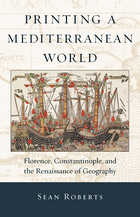
In 1482, the Florentine humanist and statesman Francesco Berlinghieri produced the Geographia, a book of over one hundred folio leaves describing the world in Italian verse, inspired by the ancient Greek geography of Ptolemy. The poem, divided into seven books (one for each day of the week the author “travels” the known world), is interleaved with lavishly engraved maps to accompany readers on this journey.
Sean Roberts demonstrates that the Geographia represents the moment of transition between printing and manuscript culture, while forming a critical base for the rise of modern cartography. Simultaneously, the use of the Geographia as a diplomatic gift from Florence to the Ottoman Empire tells another story. This exchange expands our understanding of Mediterranean politics, European perceptions of the Ottomans, and Ottoman interest in mapping and print. The envoy to the Sultan represented the aspirations of the Florentine state, which chose not to bestow some other highly valued good, such as the city’s renowned textiles, but instead the best example of what Florentine visual, material, and intellectual culture had to offer.

A sharp exposé of the roots of the cost-exposure consensus in American health care that shows how the next wave of reform can secure real access and efficiency.
The toxic battle over how to reshape American health care has overshadowed the underlying bipartisan agreement that health insurance coverage should be incomplete. Both Democrats and Republicans expect patients to bear a substantial portion of health care costs through deductibles, copayments, and coinsurance. In theory this strategy empowers patients to make cost-benefit tradeoffs, encourages thrift and efficiency in a system rife with waste, and defends against the moral hazard that can arise from insurance. But in fact, as Christopher T. Robertson reveals, this cost-exposure consensus keeps people from valuable care, causes widespread anxiety, and drives many patients and their families into bankruptcy and foreclosure.
Marshalling a decade of research, Exposed offers an alternative framework that takes us back to the core purpose of insurance: pooling resources to provide individuals access to care that would otherwise be unaffordable. Robertson shows how the cost-exposure consensus has changed the meaning and experience of health care and exchanged one form of moral hazard for another. He also provides avenues of reform. If cost exposure remains a primary strategy, physicians, hospitals, and other providers must be held legally responsible for communicating those costs to patients, and insurance companies should scale cost exposure to individuals’ ability to pay.
New and more promising models are on the horizon, if only we would let go our misguided embrace of incomplete insurance.
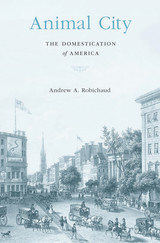
Why do America’s cities look the way they do? If we want to know the answer, we should start by looking at our relationship with animals.
Americans once lived alongside animals. They raised them, worked them, ate them, and lived off their products. This was true not just in rural areas but also in cities, which were crowded with livestock and beasts of burden. But as urban areas grew in the nineteenth century, these relationships changed. Slaughterhouses, dairies, and hog ranches receded into suburbs and hinterlands. Milk and meat increasingly came from stores, while the family cow and pig gave way to the household pet. This great shift, Andrew Robichaud reveals, transformed people’s relationships with animals and nature and radically altered ideas about what it means to be human.
As Animal City illustrates, these transformations in human and animal lives were not inevitable results of population growth but rather followed decades of social and political struggles. City officials sought to control urban animal populations and developed sweeping regulatory powers that ushered in new forms of urban life. Societies for the Prevention of Cruelty to Animals worked to enhance certain animals’ moral standing in law and culture, in turn inspiring new child welfare laws and spurring other wide-ranging reforms.
The animal city is still with us today. The urban landscapes we inhabit are products of the transformations of the nineteenth century. From urban development to environmental inequality, our cities still bear the scars of the domestication of urban America.
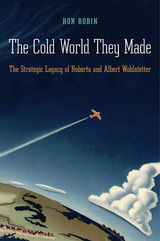
In the heady days of the Cold War, when the Bomb loomed large in the ruminations of Washington’s wise men, policy intellectuals flocked to the home of Albert and Roberta Wohlstetter to discuss deterrence and doomsday. The Cold World They Made takes a fresh look at the original power couple of strategic studies. Seeking to unravel the complex tapestry of the Wohlstetters’ world and worldview, Ron Robin reveals fascinating insights into an unlikely husband-and-wife pair who, at the height of the most dangerous military standoff in history, gained access to the deepest corridors of American power.
The author of such classic Cold War treatises as “The Delicate Balance of Terror,” Albert Wohlstetter is remembered for advocating an aggressive brinksmanship that stood in stark contrast with what he saw as weak and indecisive policies of Soviet containment. Yet Albert’s ideas built crucially on insights gleaned from his wife. Robin makes a strong case for the Wohlstetters as a team of intellectual equals, showing how Roberta’s scholarship was foundational to what became known as the Wohlstetter Doctrine. Together at RAND Corporation, Albert and Roberta crafted a mesmerizing vision of the Soviet threat, theorizing ways for the United States to emerge victorious in a thermonuclear exchange.
Far from dwindling into irrelevance after the Cold War, the torch of the Wohlstetters’ intellectual legacy was kept alive by well-placed disciples in George W. Bush’s administration. Through their ideological heirs, the Wohlstetters’ signature combination of brilliance and hubris continues to shape American policies.

THIS EDITION HAS BEEN REPLACED BY A NEWER EDITION..
From the awesome grandeur of the great pyramids to the delicacy of a face etched on an amulet, the spellbinding power of the art of ancient Egypt persists to this day. This beautifully illustrated book conducts us through the splendors of this world, great and small, and into the mysteries of its fascination in its day as well as in our own. What did art, and the architecture that housed it, mean to the ancient Egyptians? Why did they invest such vast wealth and effort in its production? These are the puzzles Gay Robins explores as she examines the objects of Egyptian art--the tombs and wall paintings, the sculpture and stelae, the coffins, funerary papyri, and amulets--from its first flowering in the Early Dynastic period to its final resurgence in the time of the Ptolemies.
Spanning three thousand years, her book offers a thorough and delightfully readable introduction to the art of ancient Egypt even as it provides insight into questions that have long perplexed experts and amateurs alike. With remarkable sensitivity to the complex ways in which historical, religious, and social changes are related to changes in Egyptian art, she brings out the power and significance of the image in Egyptian belief and life. Her attention to the later period, including Ptolemaic art, shows for the first time how Egyptian art is a continuous phenomenon, changing to meet the needs of different times, right down to the eclipse of ancient Egyptian culture. In its scope, its detail, and its eloquent reproduction of over 250 objects from the British Museum and other collections in Europe, the United States, and Egypt, this volume is without parallel as a guide to the art of ancient Egypt.

From the awesome grandeur of the Great Pyramids to the delicacy of a face etched on an amulet, the spellbinding power of ancient Egyptian art persists to this day. Spanning three thousand years, this beautifully illustrated history offers a thorough and delightfully readable introduction to the artwork even as it provides insight into questions that have long engaged experts and amateurs alike. In its scope, its detail, and its eloquent reproduction of over 250 objects, Gay Robins’s classic book is without parallel as a guide to the art of ancient Egypt.
This eagerly awaited new edition includes many new color photographs and a fully revised and updated bibliography.

An idealized version of women appears everywhere in the art of ancient Egypt, but the true nature of these women’s lives has long remained hidden. Gay Robins’s book, gracefully written and copiously illustrated, cuts through the obscurity of the ages to show us what the archaeological riches of Egypt really say about how these women lived, both in the public eye and within the family.
The art and written records of the time present a fascinating puzzle. But how often has the evidence been interpreted, consciously or otherwise, from a male viewpoint? Robins conducts us through these sources with an archaeologist’s relish, stripping away layer after interpretive layer to expose the reality beneath. Here we see the everyday lives of women in the economic, legal, or domestic sphere, from the Early Dynastic Period almost 5,000 years ago to the conquest of Alexander in 332 BC. Within this kingdom ruled and run by men, women could still wield influence indirectly—and in some cases directly, when a woman took the position of king. The exceptional few who assumed real power appear here in colorful detail, alongside their more traditional counterparts. Robins examines the queens’ reputed divinity and takes a frank look at the practice of incest within Egypt’s dynasties. She shows us the special role of women in religious rites and offices, and assesses their depiction in Egyptian art as it portrays their position in society.
By drawing women back into the picture we have of ancient Egypt, this book opens a whole new perspective on one of world history’s most exotic and familiar cultures.


A continuing, comprehensive and timely survey of the state of knowledge of ocean science, this distinguished series provides an overview of research frontiers as ocean science progresses. Areas covered include physical, biological, and chemical oceanography, marine geology, and geophysics and the interactions of the oceans with the atmosphere, the solid earth, and ice. Because ocean science is evolving so rapidly, straining the boundaries of traditional sub-disciplines, interdisciplinary topics have a special place in this series--including those topics related to the application of ocean science, for example, to ocean technology, marine operations, and the resources of the sea. As a treatise on advances and new developments, each topical volume starts with fundamentals and covers recent progress, so as to provide a balanced account of how oceanography is evolving.
Previous volumes (1-12) in the series are now available from Harvard University Press.
In the manifold, multidisciplinary efforts of science to understand and manage our planet, contemporary ocean science plays an essential role. Volumes 13 and 14 of the series The Sea focus on two of the most important components in the interdisciplinary field of ocean science today--the coastal ocean and its interactions with the deep sea, and coupled physical-biogeochemical and ecosystem dynamics.
Comprehensive, definitive studies, these volumes chart the real progress being made by ocean scientists in achieving lasting scientific understanding; specifically, they address issues surrounding significant applications--for coastal regions and in general--such as: the development of monitoring and prediction systems; functionality and stability of ecosystems; eutrophication; harmful algae blooms; habitat modification; and regime shift.
Intended as companion volumes to Volumes 10 and 11 on physical coastal oceanography, these studies of the global coastal ocean continue the series' overall effort to encourage and facilitate coastal and shelf ocean sciences and technology on a global basis.

A continuing, comprehensive and timely survey of the state of knowledge of ocean science, this distinguished series provides an overview of research frontiers as ocean science progresses. Areas covered include physical, biological, and chemical oceanography, marine geology, and geophysics and the interactions of the oceans with the atmosphere, the solid earth, and ice. Because ocean science is evolving so rapidly, straining the boundaries of traditional sub-disciplines, interdisciplinary topics have a special place in this series--including those topics related to the application of ocean science, for example, to ocean technology, marine operations, and the resources of the sea. As a treatise on advances and new developments, each topical volume starts with fundamentals and covers recent progress, so as to provide a balanced account of how oceanography is evolving.
Previous volumes (1-13) in the series are now available from Harvard University Press.
In the manifold, multidisciplinary efforts of science to understand and manage our planet, contemporary ocean science plays an essential role. Volumes 13 and 14 of the series The Sea focus on two of the most important components in the interdisciplinary field of ocean science today--the coastal ocean and its interactions with the deep sea, and coupled physical-biogeochemical and ecosystem dynamics.
Comprehensive, definitive studies, these volumes chart the real progress being made by ocean scientists in achieving lasting scientific understanding; specifically, they address issues surrounding significant applications--for coastal regions and in general--such as: the development of monitoring and prediction systems; functionality and stability of ecosystems; eutrophication; harmful algae blooms; habitat modification; and regime shift.
Intended as companion volumes to Volumes 10 and 11 on physical coastal oceanography, these studies of the global coastal ocean continue the series' overall effort to encourage and facilitate coastal and shelf ocean sciences and technology on a global basis.

Download PDF of corrected version of Chapter 32
A continuing, comprehensive and timely survey of the state of knowledge of ocean science, this distinguished series provides an overview of research frontiers as ocean science progresses. Areas covered include physical, biological, and chemical oceanography, marine geology, and geophysics and the interactions of the oceans with the atmosphere, the solid earth, and ice. Because ocean science is evolving so rapidly, straining the boundaries of traditional sub-disciplines, interdisciplinary topics have a special place in this series--including those topics related to the application of ocean science, for example, to ocean technology, marine operations, and the resources of the sea. As a treatise on advances and new developments, each topical volume starts with fundamentals and covers recent progress, so as to provide a balanced account of how oceanography is evolving.
Previous volumes (1-13) in the series are now available from Harvard University Press.
In the manifold, multidisciplinary efforts of science to understand and manage our planet, contemporary ocean science plays an essential role. Volumes 13 and 14 of the series The Sea focus on two of the most important components in the interdisciplinary field of ocean science today--the coastal ocean and its interactions with the deep sea, and coupled physical-biogeochemical and ecosystem dynamics.
Comprehensive, definitive studies, these volumes chart the real progress being made by ocean scientists in achieving lasting scientific understanding; specifically, they address issues surrounding significant applications--for coastal regions and in general--such as: the development of monitoring and prediction systems; functionality and stability of ecosystems; eutrophication; harmful algae blooms; habitat modification; and regime shift.
Intended as companion volumes to Volumes 10 and 11 on physical coastal oceanography, these studies of the global coastal ocean continue the series' overall effort to encourage and facilitate coastal and shelf ocean sciences and technology on a global basis.


How does the law regard and define mental incompetence, when faced with the problem of meting out justice? To what extent has the law relied on extra-legal authorities—be they religious or scientific—to frame its own categories of mental incompetence and madness? Wild Beasts and Idle Humours takes us on an illuminating journey through the changing historical landscape of human nature and offers an unprecedented look at the legal conceptions of insanity from the pre-classical Greek world to the present. Although actual trial records are either totally lacking or incomplete until the eighteenth century, there are other sources from which the insanity defenses can be constructed.
In this book Daniel N. Robinson, a distinguished historian of psychology, pores over centuries of written law, statements by legal commentators, summaries of crimes, and punishments, to glean from these sources an understanding of epochal views of responsibility and competence. From the Greek phrenesis to the Roman notions of furiosus and non compos mentis, from the seventeenth-century witch trials to today’s interpretation of mens rea, Robinson takes us through history and provides the intricate story of how the insanity defense has been construed as a meeting point of the law and those professions that chart human behavior and conduct: namely religion, medicine, and psychology. The result is a rare historical account of “insanity” within Western civilization.
Wild Beasts and Idle Humours will be essential reading for anyone interested in the evolution of thinking not merely about legal insanity but about such core concepts as responsibility, fitness for the rule of law, competence to enter into contracts and covenants, the role of punishments, and the place of experts within the overall juridical context.

The rise of the Mongol empire transformed world history. Its collapse in the mid-fourteenth century had equally profound consequences. Four themes dominate this study of the late Mongol empire in Northeast Asia during this chaotic era: the need for a regional perspective encompassing all states and ethnic groups in the area; the process and consequences of pan-Asian integration under the Mongols; the tendency for individual and family interests to trump those of dynasty, country, or linguistic affiliation; and finally, the need to see Koryo Korea as part of the wider Mongol empire.
Northeast Asia was an important part of the Mongol empire, and developments there are fundamental to understanding both the nature of the Mongol empire and the new post-empire world emerging in the 1350s and 1360s. In Northeast Asia, Jurchen, Mongol, Chinese, Korean, and Japanese interests intersected, and the collapse of the Great Yuan reshaped Northeast Asia dramatically. To understand this transition, or series of transitions, the author argues, one cannot examine states in isolation. The period witnessed intensified interactions among neighboring polities and new regional levels of economic, political, military, and social integration that explain the importance of personal and family interests and of Korea in the Mongol state.


This collection of essays reveals the Ming court as an arena of competition and negotiation, where a large cast of actors pursued individual and corporate ends, personal agency shaped protocol and style, and diverse people, goods, and tastes converged. Rather than observing an immutable set of traditions, court culture underwent frequent reinterpretation and rearticulation, processes driven by immediate personal imperatives, mediated through social, political, and cultural interaction.
The essays address several common themes. First, they rethink previous notions of imperial isolation, instead stressing the court’s myriad ties both to local Beijing society and to the empire as a whole. Second, the court was far from monolithic or static. Palace women, monks, craftsmen, educators, moralists, warriors, eunuchs, foreign envoys, and others strove to advance their interests and forge advantageous relations with the emperor and one another. Finally, these case studies illustrate the importance of individual agency. The founder’s legacy may have formed the warp of court practices and tastes, but the weft varied considerably. Reflecting the complexity of the court, the essays represent a variety of perspectives and disciplines—from intellectual, cultural, military, and political to art history and musicology.

This volume contains 189 hitherto unpublished letters by Edwin Arlington Robinson. They were written between 1897 and 1930 to one of his first admirers, Edith Brower of Pennsylvania.
The letters begin when the twenty-seven-year-old poet writes gratefully to the stranger who has expressed appreciation of his first, privately printed, book of poems, The Torrent and the Night Before. Soon he was carrying on an intense correspondence, baring his soul—safely, he believed, because the woman he described as “infernally bright and not at all ugly,” with “something of a literary reputation,” was “too old to give me a chance to bother myself with any sentimental uneasiness.” (She was twenty-one years his senior.)
Continually reflecting his laconic, self-deprecating Yankee spirit, the letters range from the uncontrollable outpourings of a lonely individual, desperate for encouragement and understanding, to brief words of greeting or farewell. Without reserve, Robinson—who was eventually awarded the Pulitzer prize for poetry three times—confides his reactions to people and places, his thoughts about his own work, and his personal opinions of such writers as Browning, Dickens, Hardy, Moody, and Pater.
Mr. Cary has included Miss Brower’s unpublished memoir on the poet’s character and literary career, “Memories of Edwin Arlington Robinson,” and her penetrating review of The Children of the Night. In addition to an informative Introduction, he contributes full explanatory notes, a list of Robinson’s works, and an index.

Something is not right in the world of Tom Sawyer and Huckleberry Finn. The unease is less evident to Tom, the manipulator, than to the socially marginal Huck. The trouble is most dramatically revealed when Huck, whose “sivilized” Christian conscience is developing, faces the choice between betraying his black friend Jim—which he believes is his moral duty—and letting him escape, as his heart tells him to do.
“Bad faith” is Forrest Robinson's name for the dissonance between what we profess to believe, how we act, and how we interpret our own behavior. There is bad faith in the small hypocrisies of daily living, but Robinson has a much graver issue in mind—namely slavery, which persisted for nearly a century in a Christian republic founded on ideals of freedom, equality, and justice. Huck, living on the fringes of small-town society, recognizes Jim's humanity and understands the desperateness of his plight. Yet Huck is white, a member of the dominant class; he is at once influenced and bewildered by the contradictions of bad faith in the minds of his fully acculturated contemporaries.
Robinson stresses that “bad faith” is more than a theme with Mark Twain; his bleak view of man's social nature (however humorously expressed), his nostalgia, his ambivalence about the South, his complex relationship to his audience, can all be traced back to an awareness of the deceits at the core of his culture—and he is not himself immune. This deeply perceptive book will be of interest to students of American literature and history and to anyone concerned with moral issues.


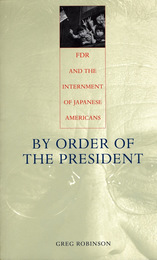
On February 19, 1942, following the Japanese bombing of Pearl Harbor and Japanese Army successes in the Pacific, President Franklin Delano Roosevelt signed a fateful order. In the name of security, Executive Order 9066 allowed for the summary removal of Japanese aliens and American citizens of Japanese descent from their West Coast homes and their incarceration under guard in camps. Amid the numerous histories and memoirs devoted to this shameful event, FDR's contributions have been seen as negligible. Now, using Roosevelt's own writings, his advisors' letters and diaries, and internal government documents, Greg Robinson reveals the president's central role in making and implementing the internment and examines not only what the president did but why.
Robinson traces FDR's outlook back to his formative years, and to the early twentieth century's racialist view of ethnic Japanese in America as immutably "foreign" and threatening. These prejudicial sentiments, along with his constitutional philosophy and leadership style, contributed to Roosevelt's approval of the unprecedented mistreatment of American citizens. His hands-on participation and interventions were critical in determining the nature, duration, and consequences of the administration's internment policy.
By Order of the President attempts to explain how a great humanitarian leader and his advisors, who were fighting a war to preserve democracy, could have implemented such a profoundly unjust and undemocratic policy toward their own people. It reminds us of the power of a president's beliefs to influence and determine public policy and of the need for citizen vigilance to protect the rights of all against potential abuses.
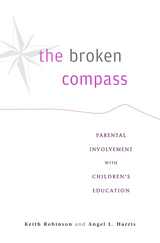
It seems like common sense that children do better when parents are actively involved in their schooling. But how well does the evidence stack up? The Broken Compass puts this question to the test in the most thorough scientific investigation to date of how parents across socioeconomic and ethnic groups contribute to the academic performance of K-12 children. The study's surprising discovery is that no clear connection exists between parental involvement and improved student performance.
Keith Robinson and Angel Harris assessed over sixty measures of parental participation, at home and in school. Some of the associations they found between socioeconomic status and educational involvement were consistent with past studies. Yet other results ran contrary to previous research and popular perceptions. It is not the case that Hispanic and African American parents are less concerned with education than other ethnic groups--or that "tiger parenting" among Asian Americans gets the desired results. In fact, many low-income parents across a wide spectrum want to be involved in their children's school lives, but they often receive little support from the school system. And for immigrant families, language barriers only worsen the problem.
While Robinson and Harris do not wish to discourage parents' interest, they believe that the time has come to seriously reconsider whether greater parental involvement can make much of a dent in the basic problems facing their children's education today. This provocative study challenges some of our most cherished beliefs about the role of family in educational success.


Throughout Chinese history mountains have been integral components of the religious landscape. They have been considered divine or numinous sites, the abodes of deities, the preferred locations for temples and monasteries, and destinations for pilgrims. Early in Chinese history a set of five mountains were co-opted into the imperial cult and declared sacred peaks, yue, demarcating and protecting the boundaries of the Chinese imperium.
The Southern Sacred Peak, or Nanyue, is of interest to scholars not the least because the title has been awarded to several different mountains over the years. The dynamic nature of Nanyue raises a significant theoretical issue of the mobility of sacred space and the nature of the struggles involved in such moves. Another facet of Nanyue is the multiple meanings assigned to this place: political, religious, and cultural. Of particular interest is the negotiation of this space by Daoists and Buddhists. The history of their interaction leads to questions about the nature of the divisions between these two religious traditions. James Robson’s analysis of these topics demonstrates the value of local studies and the emerging field of Buddho–Daoist studies in research on Chinese religion.
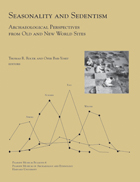
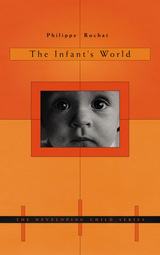
What do infants know? What do they feel, and how do they come to understand what’s happening around them? How do they begin to construe others as persons with feelings and intentions? These questions inspire this remarkable new look at the infant’s world. The short answer? Infants are much more sophisticated perceivers, feelers, and thinkers of their world than we may think.
In this lively book, Philippe Rochat makes a case for an ecological approach to human development. Looking at the ecological niche infants occupy, he describes how infants develop capabilities and conceptual understanding in relation to three interconnected domains: the self, objects, and other people. Drawing on the great body of contemporary “competent infant” research, Rochat offers a thoughtful overview of many current, controversial topics, from neonatal imitation to early numeracy, to the development of self-awareness. In a provocative conclusion, he describes infancy as a series of key transitions—so dramatic that they are sometimes called “revolutions”—and maps out the processes that impel development.
Offering a unifying theoretical vision of the vast research of recent years, The Infant’s World is an inspiring introduction to the liveliest area of modern psychology.

A panorama of a whole civilization, a world on the verge of cataclysm, unfolds in this magisterial work by the foremost historian of eighteenth-century France. Since Tocqueville’s account of the Old Regime, historians have struggled to understand the social, cultural, and political intricacies of this efflorescence of French society before the Revolution. France in the Enlightenment is a brilliant addition to this historical interest.
France in the Enlightenment brings the Old Regime to life by showing how its institutions operated and how they were understood by the people who worked within them. Daniel Roche begins with a map of space and time, depicting France as a mosaic of overlapping geographical units, with people and goods traversing it to the rhythms of everyday life. He fills this frame with the patterns of rural life, urban culture, and government institutions. Here as never before we see the eighteenth-century French “culture of appearances”: the organization of social life, the diffusion of ideas, the accoutrements of ordinary people in the folkways of ordinary living—their food and clothing, living quarters, reading material. Roche shows us the eighteenth-century France of the peasant, the merchant, the noble, the King, from Paris to the provinces, from the public space to the private home.
By placing politics and material culture at the heart of historical change, Roche captures the complexity and depth of the Enlightenment. From the finest detail to the widest view, from the isolated event to the sweeping trend, his masterly book offers an unparalleled picture of a society in motion, flush with the transformation that will be its own demise.

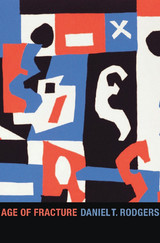
In the last quarter of the twentieth century, the ideas that most Americans lived by started to fragment. Mid-century concepts of national consensus, managed markets, gender and racial identities, citizen obligation, and historical memory became more fluid. Flexible markets pushed aside Keynesian macroeconomic structures. Racial and gender solidarity divided into multiple identities; community responsibility shrank to smaller circles. In this wide-ranging narrative, Daniel T. Rodgers shows how the collective purposes and meanings that had framed social debate became unhinged and uncertain.
Age of Fracture offers a powerful reinterpretation of the ways in which the decades surrounding the 1980s changed America. Through a contagion of visions and metaphors, on both the intellectual right and the intellectual left, earlier notions of history and society that stressed solidity, collective institutions, and social circumstances gave way to a more individualized human nature that emphasized choice, agency, performance, and desire. On a broad canvas that includes Michel Foucault, Ronald Reagan, Judith Butler, Charles Murray, Jeffrey Sachs, and many more, Rodgers explains how structures of power came to seem less important than market choice and fluid selves.
Cutting across the social and political arenas of late-twentieth-century life and thought, from economic theory and the culture wars to disputes over poverty, color-blindness, and sisterhood, Rodgers reveals how our categories of social reality have been fractured and destabilized. As we survey the intellectual wreckage of this war of ideas, we better understand the emergence of our present age of uncertainty.
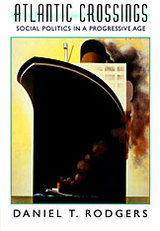
"The most belated of nations," Theodore Roosevelt called his country during the workmen's compensation fight in 1907. Earlier reformers, progressives of his day, and later New Dealers lamented the nation's resistance to models abroad for correctives to the backwardness of American social politics. Atlantic Crossings is the first major account of the vibrant international network that they constructed--so often obscured by notions of American exceptionalism--and of its profound impact on the United States from the 1870s through 1945.
On a narrative canvas that sweeps across Europe and the United States, Daniel Rodgers retells the story of the classic era of efforts to repair the damages of unbridled capitalism. He reveals the forgotten international roots of such innovations as city planning, rural cooperatives, modernist architecture for public housing, and social insurance, among other reforms. From small beginnings to reconstructions of the new great cities and rural life, and to the wide-ranging mechanics of social security for working people, Rodgers finds the interconnections, adaptations, exchanges, and even rivalries in the Atlantic region's social planning. He uncovers the immense diffusion of talent, ideas, and action that were breathtaking in their range and impact.
The scope of Atlantic Crossings is vast and peopled with the reformers, university men and women, new experts, bureaucrats, politicians, and gifted amateurs. This long durée of contemporary social policy encompassed fierce debate, new conceptions of the role of the state, an acceptance of the importance of expertise in making government policy, and a recognition of a shared destiny in a newly created world.

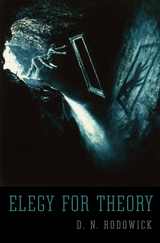
Rhetorically charged debates over theory have divided scholars of the humanities for decades. In Elegy for Theory, D. N. Rodowick steps back from well-rehearsed arguments pro and con to assess why theory has become such a deeply contested concept. Far from lobbying for a return to the "high theory" of the 1970s and 1980s, he calls for a vigorous dialogue on what should constitute a new, ethically inflected philosophy of the humanities.
Rodowick develops an ambitiously cross-disciplinary critique of theory as an academic discourse, tracing its historical displacements from ancient concepts of theoria through late modern concepts of the aesthetic and into the twentieth century. The genealogy of theory, he argues, is constituted by two main lines of descent—one that goes back to philosophy and the other rooted instead in the history of positivism and the rise of the empirical sciences. Giving literature, philosophy, and aesthetics their due, Rodowick asserts that the mid-twentieth-century rise of theory within the academy cannot be understood apart from the emergence of cinema and visual studies. To ask the question, "What is cinema?" is to also open up in new ways the broader question of what is art.
At a moment when university curriculums are everywhere being driven by scientism and market forces, Elegy for Theory advances a rigorous argument for the importance of the arts and humanities as transformative, self-renewing cultural legacies.
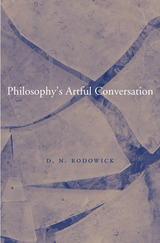
Theory has been an embattled discourse in the academy for decades. But now it faces a serious challenge from those who want to model the analytical methods of all scholarly disciplines on the natural sciences. What is urgently needed, says D. N. Rodowick, is a revitalized concept of theory that can assess the limits of scientific explanation and defend the unique character of humanistic understanding.
Philosophy’s Artful Conversation is a timely and searching examination of theory’s role in the arts and humanities today. Expanding the insights of his earlier book, Elegy for Theory, and drawing on the diverse thought of Ludwig Wittgenstein, G. H. von Wright, P. M. S. Hacker, Richard Rorty, and Charles Taylor, Rodowick provides a blueprint of what he calls a “philosophy of the humanities.” In a surprising and illuminating turn, he views the historical emergence of theory through the lens of film theory, arguing that aesthetics, literary studies, and cinema studies cannot be separated where questions of theory are concerned. These discourses comprise a conceptual whole, providing an overarching model of critique that resembles, in embryonic form, what a new philosophy of the humanities might look like.
Rodowick offers original readings of Gilles Deleuze and Stanley Cavell, bringing forward unexamined points of contact between two thinkers who associate philosophical expression with film and the arts. A major contribution to cross-disciplinary intellectual history, Philosophy’s Artful Conversation reveals the many threads connecting the arts and humanities with the history of philosophy.

As almost (or, truly, virtually) every aspect of making and viewing movies is replaced by digital technologies, even the notion of “watching a film” is fast becoming an anachronism. With the likely disappearance of celluloid film stock as a medium, and the emergence of new media competing for an audience, what will happen to cinema—and to cinema studies? In the first of two books exploring this question, D. N. Rodowick considers the fate of film and its role in the aesthetics and culture of moviemaking and viewing in the twenty-first century.
Here Rodowick proposes and examines three different critical responses to the disappearance of film in relation to other time-based media, and to the study of contemporary visual culture. Film, he suggests, occupies a special place in the genealogy of the arts of the virtual: while film disappears, cinema persists—at least in the narrative forms imagined by Hollywood since 1915. Rodowick also observes that most so-called “new media” are fashioned upon a cinematic metaphor. His book helps us see how digital technologies are serving, like television and video before them, to perpetuate the cinematic as the mature audiovisual culture of the twentieth century—and, at the same time, how they are preparing the emergence of a new audiovisual culture whose broad outlines we are only just beginning to distinguish.

Born in the Australian bush, Stella Miles Franklin became an international publishing sensation in 1901, at the age of 21, with My Brilliant Career, whose portrayal of an ambitious and independent woman defying social expectations still captivates readers. In a magisterial biography, Jill Roe details Miles’ extraordinary life.
Early success launched Miles into influential literary and socialist circles in Sydney and Melbourne, where she met Banjo Paterson (composer of “Waltzing Matilda” and author of The Man from Snowy River) and suffragist Vida Goldstein (who introduced her to Christian Science). Researching the lives of working women, Miles disguised herself as a domestic for a year. She then lit out for adventure abroad, landing in San Francisco just after the Great Earthquake. At Jane Addams’ Hull House in Chicago, she joined the women’s labor movement, working for the National Women’s Trade Union League and writing for its magazine.
Moving to Britain in 1915, Miles joined the war cause and served in Macedonia as a hospital orderly and then worked in London for various feminist and progressive causes, including the National Housing Council. Always she wrote, becoming a prolific author of plays as well as novels and archetypal bush stories. Returning to Australia in the 1930s, she supported women’s causes and promoted Australian writers, leaving her estate to endow the nation’s premier literary award.
The culmination of decades of research in thousands of papers left by Miles, Her Brilliant Career stands as the definitive life of this remarkable writer and feminist.


The strike of a praying mantis's forelegs is so fast that, once they are set in motion, the mantis cannot control its aim. How does it ever manage to catch a fly? A moth negotiating the night air hears the squeak of a hunting bat on the wing, and tumbles out of harm's way. How?
Insects are ideal subjects for neurophysiological studies, and at its simplest level this classic book relates the activities of nerve cells to the activities of insects, something that had never been attempted when the book first appeared in 1963. In several elegant experiments--on the moth, the cockroach, and the praying mantis--Roeder shows how stimulus and behavior are related through the nervous system and suggests that the insect brain appears to control behavior by determining which of the various built-in activity patterns will appear in a given situation. This slim volume remains invaluable to an understanding of the nervous mechanisms responsible for insect behavior.

Historical landmarks, such as wars, coups, and revolutions, seem to arise under unique conditions. Indeed, what seems to distinguish history from the natural and social sciences is its inability to be dissected or generalized in any meaningful way. Yet even complex and large-scale events like the American Revolutionary War and the French Revolution can be broken down into their component parts, and, as Bertrand Roehner and Tony Syme show, these smaller modules are rarely unique to the events they collectively compose.
The aim of this book is to analyze clusters of similar "elementary" occurrences that serve as the building blocks of more global events. Making connections between seemingly unrelated case studies, Roehner and Syme apply scientific methodology to the analysis of history. Their book identifies the recurring patterns of behavior that shape the histories of different countries separated by vast stretches of time and space. Taking advantage of a broad wealth of historical evidence, the authors decipher what may be seen as a kind of genetic code of history.

This is the first biography in a hundred years of Jeanne d'Albret, a femme politique worthy of comparison with Elizabeth of England (her ally) and Catherine de Medici (her opponent) in a period when all the political and ideological currents of Reformation Europe converged in France. Her career as a feudal ruler in southwest France illustrates the changing relations between the high nobility and the crown, while her role as co-leader, with Coligny, of the Calvinist party at its height contributes to an understanding of the failure of the French Reformation. As the mother of Henry IV, she was responsible for the political education of France's most popular king, some of whose problems were inherited from her along with the models for some solutions.
The daughter of Marguerite de Navarre, Jeanne d'Albret experienced a dramatic series of crises which her uncompromising Calvinism and iron will enabled her to survive. In addition to the many unpublished letters included here, the author's insights into the character and motives of this unusual woman constitute one of the most enlightening aspects of her biography. Nancy Lyman Roelker's vivid style breathes life into a host of fascinating figures in an era in France richly colored by intrigue, war, and turbulent religious conflict.
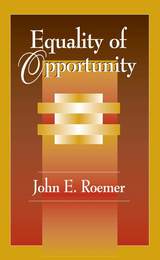
John Roemer points out that there are two views of equality of opportunity that are widely held today. The first, which he calls the nondiscrimination principle, states that in the competition for positions in society, individuals should be judged only on attributes relevant to the performance of the duties of the position in question. Attributes such as race or sex should not be taken into account. The second states that society should do what it can to level the playing field among persons who compete for positions, especially during their formative years, so that all those who have the relevant potential attributes can be considered.
Common to both positions is that at some point the principle of equal opportunity holds individuals accountable for achievements of particular objectives, whether they be education, employment, health, or income. Roemer argues that there is consequently a "before" and an "after" in the notion of equality of opportunity: before the competition starts, opportunities must be equalized, by social intervention if need be; but after it begins, individuals are on their own. The different views of equal opportunity should be judged according to where they place the starting gate which separates "before" from "after." Roemer works out in a precise way how to determine the location of the starting gate in the different views.
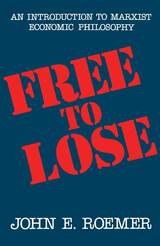
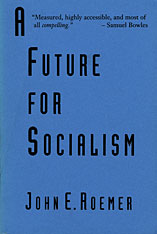
Many people point to recent events—the collapse of the Soviet Union, the electoral defeat of the Sandinistas—as proof that capitalism has triumphed over socialism once and for all. In A Future for Socialism, a noted economist argues that socialism is not dead but merely in need of modernizing. John Roemer believes that the hallmark of socialism is egalitarianism—equality of opportunity for self-realization and welfare, for political influence, and for social status—and he reminds us that capitalist societies face increasingly difficult problems of poverty and social inequality. Reenergizing a debate that began with Oskar Lange and Friedrich Hayek in the late 1930s, he brings to important questions of political economy a new level of sophistication in line with contemporary theories of justice and equality.
Roemer sees the solution of the principal-agent problem as the key to developing a decentralized market-socialist economy. This would be capable of maintaining efficiency and technological innovation while supporting a substantively more equal distribution of income than is achieved in capitalist economies. Roemer defends his views against skeptics on the right, who believe that efficiency and innovation are incompatible with egalitarianism, and skeptics on the left, who believe that socialism is incompatible with markets.
Because of its interdisciplinary approach, A Future for Socialism will appeal to a general social science audience, including economists, political scientists, sociologists, and political philosophers. It is also accessible to the interested reader.

How can exploitation and even class division occur in socialist societies? The question is not merely embarrassing for Marxists and socialists. It is also a deep puzzle for economic theorists. In this original and powerful work, John Roemer proposes a general theory of exploitation which provides a game theoretic framework for expressing any conception of exploitation—feudal, capitalist, or socialist—in a standardized and explicit way, thus permitting a clear comparison of different ethical conceptions. As well as applying the general theory to an analysis of socialist society, Roemer uses it to contrast Marxian and neoclassical conceptions of exploitation. By placing the Marxian conception of exploitation in the context of a more general theory, Roemer provides fresh insights into classical questions, and resolves several old problems in Marxian economics.
The book also contains a formal theory of class formation. Once the behavior and institutional specifications of an economy are given, classes emerge endogenously in the model. In a major theorem Roemer relates the two key characteristics of a person in a given economy: his class position and his status as exploiter or exploited. Finally, he shows that the general theory of exploitation can be viewed as the formal translation into economic language of the theory of historical materialism. In its mathematical power and precision, its skillful use of general equilibrium and game theory, the book will become an important bridge between Marxist and neoclassical economics.
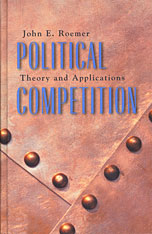
In this book, John Roemer presents a unified and rigorous theory of political competition between parties. He models the theory under many specifications, including whether parties are policy oriented or oriented toward winning, whether they are certain or uncertain about voter preferences, and whether the policy space is uni- or multidimensional. He examines all eight possible combinations of these choice assumptions, and characterizes their equilibria.
He fleshes out a model in which each party is composed of three different factions concerned with winning, with policy, and with publicity. Parties compete with one another. When internal bargaining is combined with external competition, a natural equilibrium emerges, which Roemer calls party-unanimity Nash equilibrium.
Assuming only the distribution of voter preferences and the endowments of the population, he deduces the nature of the parties that will form. He then applies the theory to several empirical puzzles, including income distribution, patterns of electoral success, and why there is no labor party in the United States.
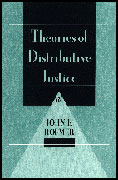
Equally at home in economic theory and political philosophy, John Roemer has written a unique book that critiques economists’ conceptions of justice from a philosophical perspective and philosophical theories of distributive justice from an economic one. He unites the economist’s skill in constructing precise, axiomatic models with the philosopher’s in exploring the assumptions of those models. His synthesis will enable philosophers and economists to engage each other’s ideas more fruitfully.
Roemer first shows how economists’ understanding of the fairness of various resource allocation mechanisms can be enriched. He extends the economic theory of social choice to show how individual preferences can be aggregated into social preferences over various alternatives. He critiques the standard applications of axiomatic bargaining theory to distributive justice, showing that they ignore information on available resources and preference orderings. He puts these variables in the models, which enable him to generate resource allocation mechanisms that are more consonant with our intuitions about distributive justice. He then critiques economists’ theories of utilitarianism and examines the question of the optimal population size in a world of finite resources.
Roemer explores the major new philosophical concepts of the theory of distributive justice—primary goods, functionings and capability, responsibility in its various forms, procedural versus outcome justice, midfare—and shows how they can be sharpened and clarified with the aid of economic analysis. He critiques and extends the ideas of major contemporary theories of distributive justice, including those of Rawls, Sen, Nozick, and Dworkin. Beginning from the recent theories of Arneson and G. A. Cohen, he constructs a theory of equality of opportunity. Theories of Distributive Justice contains important and original results, and it can also be used as a graduate-level text in economics and philosophy.

From the Republican Party's "Southern Strategy" in the U.S. to the rise of Le Pen's National Front in France, conservative politicians in the last thirty years have capitalized on voters' resentment of ethnic minorities to win votes and undermine government aid to the poor. In this book, the authors construct a theoretical model to calculate the effect of voters' attitudes about race and immigration on political parties' stances on income distribution.
Drawing on empirical data from the U.S., Britain, Denmark, and France, they use their model to show how parties choose their platforms and compete for votes. They find that the Right is able to push fiscal policies that hurt working and middle class citizens by attracting voters who may be liberal on economic issues but who hold conservative views on race or immigration. The authors estimate that if all voters held non-racist views, liberal and conservative parties alike would have proposed levels of redistribution 10 to 20 percent higher than they did. Combining historical analysis and empirical rigor with major theoretical advances, the book yields fascinating insights into how politicians exploit social issues to advance their economic agenda.

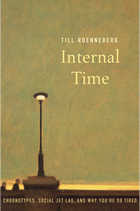
Winner of a British Medical Association Book Award
A Brain Pickings Best Science Book of the Year
Early birds and night owls are born, not made. Sleep patterns may be the most obvious manifestation of the highly individualized biological clocks we inherit, but these clocks also regulate bodily functions from digestion to hormone levels to cognition. Living at odds with our internal timepieces, Till Roenneberg shows, can make us chronically sleep deprived and more likely to smoke, gain weight, feel depressed, fall ill, and fail geometry. By understanding and respecting our internal time, we can live better.
“Internal Time is a cautionary tale—actually a series of 24 tales, not coincidentally. Roenneberg ranges widely from the inner workings of biological rhythms to their social implications, illuminating each scientific tutorial with an anecdote inspired by clinical research...Written with grace and good humor, Internal Time is a serious work of science incorporating the latest research in chronobiology...[A] compelling volume.”
—A. Roger Ekirch, Wall Street Journal
“This is a fascinating introduction to an important topic, which will appeal to anyone who wishes to delve deep into the world of chronobiology, or simply wonders why they struggle to get a good night’s sleep.”
—Richard Wiseman, New Scientist



These essays by one of America's most distinguished experts in business management and human relations were written between 1928 and 1968. Some are published here for the first time. They are addressed primarily to business practitioners, but are also of considerable interest to social scientists concerned with matters of organization, administration, motivation, and communication. The essays might be said to constitute the author's adventure over a period of forty years with an idea that he felt had important implications for administrative practices.
The early pieces begin with the exposition of a new way of thinking about the behavior of people in organizations, and the research from which it arose. Some of the recent essays express concern with the way in which the area of human relations has been developing—namely, as a fad, a cult, and the way to salvation instead of as a road toward competence. Among the topics discussed are: the relation of theory to practice in administrative matters; the training and education of the generalist as opposed to the specialist; training in human relations; efficiency and cooperative behavior; the administration of change; and technical change and social organization.

This concise, practical book, first published in 1952, not only offers foreign students and educators answers to their questions about higher education in the United States, but is, in addition, a useful guide to American students planning to teach on this level, and to college and university teachers in the junior ranks. In 1957, the United States Information Agency issued a second edition for use abroad.
The present edition is rigorously revised in response to discussion both here and abroad; recent developments are included and statistics are brought up to date. Fine new illustrations enhance the text.

The Infante Dom Pedro (1392–1449), prince of Portugal, warrior, traveler, regent, was hero and victim of a legend. In the Book of the Infante Dom Pedro, an early-sixteenth-century Spanish fantasy by Gómez de Santisteban, Pedro’s journeys may dimly reflect the Infante’s actual wanderings in Europe but also involve Amazons and Giants in a medieval world that includes the goals of Prester John’s court and Apostle Thomas’s shrine in the Indies.
Here is a full translation of the Book, with a detailed discussion of the real travels, their transformation into legend, the tale’s influence, and the Spanish author’s true purpose.


From the calling macaw and the roaring lion to the dancing lyrebird, animals all around us can be heard and seen communicating with each other and, occasionally, with us. Why they do so, what their utterances mean, and how much we know about them are the subject of Songs, Roars, and Rituals. This is a concise, yet comprehensive, introduction to the complexities of communication in animals.
Rogers and Kaplan take us on an exciting journey through communication in the animal world, offering insights on how animals communicate by sight, sound, smell, touch, and even electrical signaling. They explore a wide variety of communication patterns in many species of mammals and birds and discuss in detail how communication signals evolved, how they are learned, and what song and mimicry may mean.
An up-to-date account of the science of animal communication, this book also considers modern concepts (such as that of deceptive communication) and modern controversies, primarily those surrounding the evolution of human language and the use of symbolic language by apes. It concludes with a thought-provoking look at the future of communication between humans and animals.

An Introduction to Sustainable Development presents the concept and practice of sustainable development as a process that meets the needs of the present generation without compromising the ability of future generations to meet their own needs. This textbook examines the environmental, economic, and social dimensions of sustainable development by focusing on changing patterns of consumption, production, and distribution of resources.
The impact of globalization and the role of the private sector including multinational corporations are discussed. Case materials include domestic and international initiatives and projects; protection of coastal wetlands; development of community-based water supply and sanitation systems; sustainable energy, forest, and industrial development.

Pressures of population growth, rapid urbanization, industrialization, and stress on natural resources provide new challenges to the Asian Development Bank as it strives to set forth environmental issues as an important element of sustainable economic development in the Asian and Pacific region. While the Bank can provide policy and technical guidance, the governments themselves must take the lead in providing the resources and policies needed to address effectively the rapidly changing environmental condition. How we measure the effectiveness of governmental performance in meeting the environmental challenge in Asia and the Pacific is the subject of this book.
By drawing on experiences in six Asian and Pacific countries, the authors have developed a series of methodological tools to assist others in assessing the environmental quality of air, water, soil, and biological diversity in developing countries. These tools can then be used to determine the financial resources needed to achieve the quality of life characteristic of a sustainable development path.

This set of eleven essays addresses the tightening water resource problems of the Arab region’s twenty countries. The authors discuss themes of water conflict and provide detailed looks at four sub-areas: the Maghreb, the Nile countries, the Arabian Peninsula, and the Mashrek.
This century has seen a technological drive to enlarge traditional surface and groundwater supplies and to expand irrigated farming for rapidly growing and progressively more prosperous populations. But now the region is facing absolute limits on its fresh water. Water in the Arab World focuses on today’s need to move toward rationalized new patterns of using water within the national economies, a transition often described as moving from supply to demand management. The change calls for intensified national legislative and planning efforts concerning water, with serious consideration of desalination and conservation, as well as of pricing and market approaches to the allocation of a very constrained supply.




This book explores diverse but complementary interdisciplinary approaches to the poetics, intertexts, and influence of the work of C. P. Cavafy (Konstantinos Kavafis), one of the most important twentieth-century European poets. Written by leading international scholars in a number of disciplines (critical theory, gender studies, comparative literature, English studies, Greek studies, anthropology, classics), the essays of this volume situate Cavafy’s poetry within the broader contexts of modernism and aestheticism and investigate its complex and innovative responses to European literary traditions (from Greek antiquity to modernity) as well as its multifaceted impact on major figures of world literature—from North America to South Africa.
Contributors include Eve Sedgwick, Helen Vendler, Dimitrios Yatromanolakis, Richard Dellamora, Mark Doty, James Faubion, Diana Haas, John Chioles, Albert Henrichs, Kathleen Coleman, Michael Paschalis, Peter Jeffreys, and Panagiotis Roilos.


Carlos Rojas presents a sweeping survey of the historical and political significance of one of the world’s most recognizable monuments. Although the splendor of the Great Wall has become virtually synonymous with its vast size, the structure’s conceptual coherence is actually grounded on the tenuous and ephemeral stories we tell about it. These stories give life to the Wall and help secure its hold on our collective imagination, while at the same time permitting it to constantly reinvent itself in accordance with the needs of each new era.
Through an examination of allusions to the Wall in an eclectic array of texts—ranging from official dynastic histories, elite poetry, and popular folktales, to contemporary tourist testimonials, children’s songs, and avant-garde performance art—this study maps out a provocative new framework for understanding the structure’s function and significance.
This volume approaches the Wall through the stories we tell and contends that it is precisely in this cultural history that we may find the Wall’s true meaning, together with the secret of its greatness.
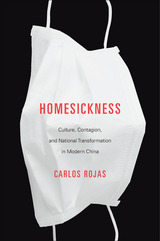
The collapse of China’s Qing dynasty coincided roughly with discoveries that helped revolutionize views of infectious disease. Together, these parallel developments generated a set of paradigm shifts in the understanding of society, the individual, as well as the cultural matrix that mediates between them. In Homesickness, Carlos Rojas examines an array of Chinese literary and cinematic tropes of illness, arguing that these works approach sickness not solely as a symptom of dysfunction but more importantly as a key to its potential solution.
Rojas focuses on a condition he calls “homesickness”—referring to a discomfort caused not by a longing for home but by an excessive proximity to it. The product of a dialectics of internal alienation and self-differentiation, this inverse homesickness marks a movement away from the “home,” conceived as spaces associated with the nation, the family, and the individual body. The result is a productive dynamism that gives rise to the possibility of long-term health. Without sickness, in other words, there could be no health.
Through a set of detailed analyses of works from China, Greater China, and the global Chinese diaspora—ranging from late-imperial figures such as Liu E and Zeng Pu to contemporary figures such as Yan Lianke and Tsai Ming-liang—Rojas asserts that the very possibility of health is predicated on this condition of homesickness.




“Although a scholar's name is usually writ in water,” wrote Herschel Baker in Hyder Edward Rollins: A Bibliography (HUP 1960), “it is unlikely that Hyder Rollins' work will be soon forgotten... In at least three large areas—Elizabethan poetry, the broadside ballad, and the Romantic poets—his erudition was unmatched.” Rollins viewed the broadside ballads as important social documents and he edited many collections of them. “In them,” he wrote, “are clearly reflected the lives and thoughts...of sixteenth and seventeenth century Englishmen. In them history becomes animated.”
This volume, originally published in 1922 and long out of print, was the first edition ever to appear of ballads from Samuel Pepys's important collection. It is now reissued with its twenty-six woodcuts and new, up-to-date information on the music.


In the first extensive American study of child psychiatry in the Soviet Union, Dr. Nancy Rollins explains that her aim is two-fold: to expand knowledge of the theory, diagnosis, and treatment of psychiatric disorders of children and adolescents and to stimulate a professional dialogue. Her attainment of this goal is clearly evidenced here by means of her astute assessment of the findings of her four-month visit to Russia as an individual investigator on the Medical Cultural Exchange program. The author's basic concern about the relationship between a society's child-rearing practices, character formation, and psychiatric disorder propelled her to ponder such questions as: Is there a describable difference between the Soviet conscience and the American conscience, as it develops during the years of childhood and adolescence? What about the problems of sexual identity in the two societies? Identity crises? Why have Soviet psychiatrists and educators remained so consistently anti-Freudian?
In addressing herself to the various questions that intrigued her, Dr. Rollins first considers the history of Soviet psychiatric thought, with the major influences shaping the direction of Soviet child psychiatry and the social perspective with personal impressions of Soviet culture and society. Ensuing chapters, based upon first-hand observations and case material, take a close look at such topics as the organization of psychiatric services, diagnosis, general treatment methods, special psychotherapy, research, and psychiatric training programs. The author's reactions to the people she encountered in children's psychoneurological hospitals, polyclinics, sanatoria, and research institutions contributes a lively dimension to this impressive work.
The study points out some differences between Soviet and American treatment methods; for example, Soviet treatment aims at inducing peace and relaxation in the patient, whereas American methods encourage exposure to and mastery of conflicts and tolerance of anxiety. Dr. Rollins also offers suggestions for further study and reflects on the relation of psychiatry and culture in the two countries.


The first listed species to make headlines after the Endangered Species Act was passed in 1973 was the snail darter, a three-inch fish that stood in the way of a massive dam on the Little Tennessee River. When the Supreme Court sided with the darter, Congress changed the rules. The dam was built, the river stopped flowing, and the snail darter went extinct on the Little Tennessee, though it survived in other waterways. A young Al Gore voted for the dam; freshman congressman Newt Gingrich voted for the fish.
A lot has changed since the 1970s, and Joe Roman helps us understand why we should all be happy that this sweeping law is alive and well today. More than a general history of endangered species protection, Listed is a tale of threatened species in the wild—from the whooping crane and North Atlantic right whale to the purple bankclimber, a freshwater mussel tangled up in a water war with Atlanta—and the people working to save them.
Employing methods from the new field of ecological economics, Roman challenges the widely held belief that protecting biodiversity is too costly. And with engaging directness, he explains how preserving biodiversity can help economies and communities thrive. Above all, he shows why the extinction of species matters to us personally—to our health and safety, our prosperity, and our joy in nature.
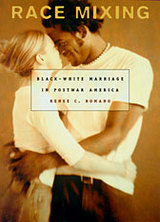
Marriage between blacks and whites is a longstanding and deeply ingrained taboo in American culture. On the eve of World War II, mixed-race marriage was illegal in most states, politicians argued for segregated facilities in order to prevent race mixing, and interracial couples risked public hostility, legal action, even violence. Yet, sixty years later, black-white marriage is no longer illegal or a divisive political issue, and the number of such couples and their mixed-race children has risen dramatically. Renee Romano explains how and why such marriages have gained acceptance, and what this tells us about race relations in contemporary America.
Although significant numbers of both blacks and whites still oppose interracial marriage, larger historical forces have greatly diminished overt racism and shaped a new consciousness about mixed-race families. The social revolutions of the 1950s and '60s (with their emphasis on individualism and nonconformity), the legal sanctions of new civil rights laws, and a decline in the institutional stability of marriage have all contributed to the growing tolerance for interracial relationships. Telling the powerful stories of couples who married across the color line, Romano shows how cultural shifts are lived by individuals, and how they have enabled mixed couples to build supportive communities for themselves and their children.
However, Romano warns that the erosion of this taboo does not mean that racism no longer exists. The history of interracial marriage helps us understand the extent to which America has overcome its racist past, and how much further we must go to achieve meaningful racial equality.

Few whites who violently resisted the civil rights struggle were charged with crimes in the 1950s and 1960s. But the tide of a long-deferred justice began to change in 1994, when a Mississippi jury convicted Byron De La Beckwith for the 1963 murder of Medgar Evers. Since then, more than one hundred murder cases have been reopened, resulting in more than a dozen trials. But how much did these public trials contribute to a public reckoning with America’s racist past? Racial Reckoning investigates that question, along with the political pressures and cultural forces that compelled the legal system to revisit these decades-old crimes.
“[A] timely and significant work…Romano brilliantly demystifies the false binary of villainous white men like Beckwith or Edgar Ray Killen who represent vestiges of a violent racial past with a more enlightened color-blind society…Considering the current partisan and racial divide over the prosecution of police shootings of unarmed black men, this book is a must-read for historians, legal analysts, and journalists interested in understanding the larger meanings of civil rights or racially explosive trials in America.”
—Chanelle Rose, American Historical Review
READERS
Browse our collection.
PUBLISHERS
See BiblioVault's publisher services.
STUDENT SERVICES
Files for college accessibility offices.
UChicago Accessibility Resources
home | accessibility | search | about | contact us
BiblioVault ® 2001 - 2024
The University of Chicago Press









